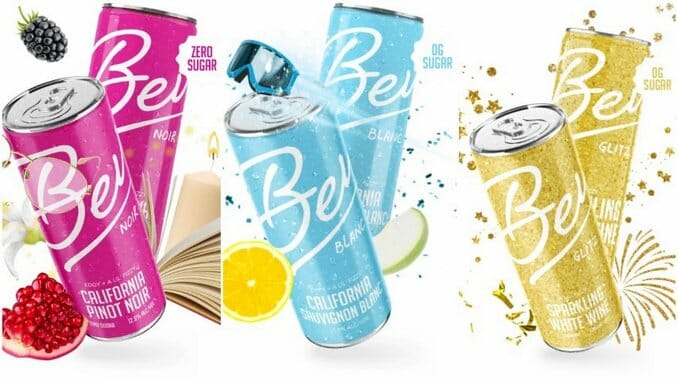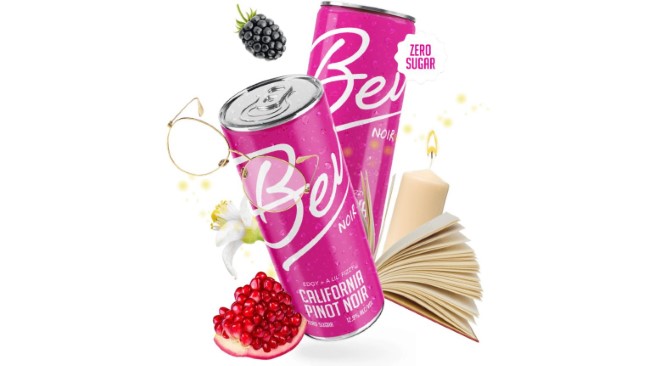Tasting: 3 Canned, Sparkling Wines from Bev
Photos via Bev Wine
A lot of effort goes into trying to market wine as something “healthy,” by one definition or another. There are countless ways to go about this, but it’s all ultimately sort of moot: Alcohol’s universal selling point is that we enjoy its taste and the way it makes us feel, but you’re not going to find a doctor to label your ethanol delivery vehicle as “healthy.” You can get them to hedge into the acceptable range with “in moderation…”, but that’s it.
Which means that ultimately, I tend to look at wellness-based gimmicks in the alcohol industry with something of a cynical eye. All too often, these claims rely upon a basic lack of understanding among the drinkers of things like “how fermentation works” or “how the rest of the industry operates.” Unless your healthier alcoholic product doesn’t have any alcohol, it’s going to be difficult for it to register as genuinely more healthy.
So it goes with brands like Bev, a California-based maker of canned wines that is trying to make a push with the “better for you” angle. They can do this in a few ways: By offering wines with relatively low-ish ABVs, typically at 11.9% ABV (which helps keep calories lower), and by getting their product certified as sugar free. Which is to say, “no added sugar.”
Bev describes this aspect with the following: “All of our wines have zero sugar and no additives or artificial sugars. We designed our fermentation process specifically to remove all sugar after the alcohol is fermented. We’re the first recognized TTB-approved canned wine to do it and we’re biased but it’s f*cking delicious.”
This is of course ignoring the elephant in the room: A lot of wine is very close to “sugar free,” or is sugar free, but simply hasn’t been labeled as such. Fermentation is literally the consumption of simple sugars by yeast, which is converted into ethanol. Wines fully fermented to dryness simply don’t have a lot of residual sugar in them, or miniscule amounts. “Added sugars” is another matter, but you won’t find them in anything you’d think of as “legit” wine—only the lowliest bottom shelf supermarket brands. Which is to say, Bev is marketing itself as something unique, but finding wine without added sugar isn’t difficult. The product is a bit more unique when considering that it’s coming from a can, but at that point you’re splitting hairs.
Now that we’ve got that out of the way, there are things to like about the company. It’s owned and operated by women, as the “Made by Chicks” tagline would suggest. Most entries in the series (even the red wine) are lightly carbonated, for folks who are into that. Each 8 oz can is indeed low in carbs and calories, as you would expect with the low ABVs and lack of added sugars.
The only thing left to do, then, is actually taste these three entries—the pinot noir, the sauvignon blanc and the sparkler—and see if they’re the sort of thing you’d want to drink when divorced from the marketing copy. So let’s do exactly that.
-

-

-

-

-

-

-

-

-

-

-

-

-

-

-

-

-

-

-

-

-

-

-

-

-

-

-

-

-

-

-

-

-

-

-

-

-

-

-

-











































